There are beautiful tales of China’s Suzhou city. It paints a vivid picture of what evolution is and feels like more than five centuries later. Among other things, the city is known for being a cultural hub, thereby leaving a rich legacy of Chinese norms and traditions.
What’s interesting about Suzhou is that it maintains its roots despite the changes coming with the 21st century. It combines elements from centuries ago and those in the modern era to create a breathtaking paradise known worldwide. We will explore its location, what it’s famous for, its history and its cuisine.
Suzhou History
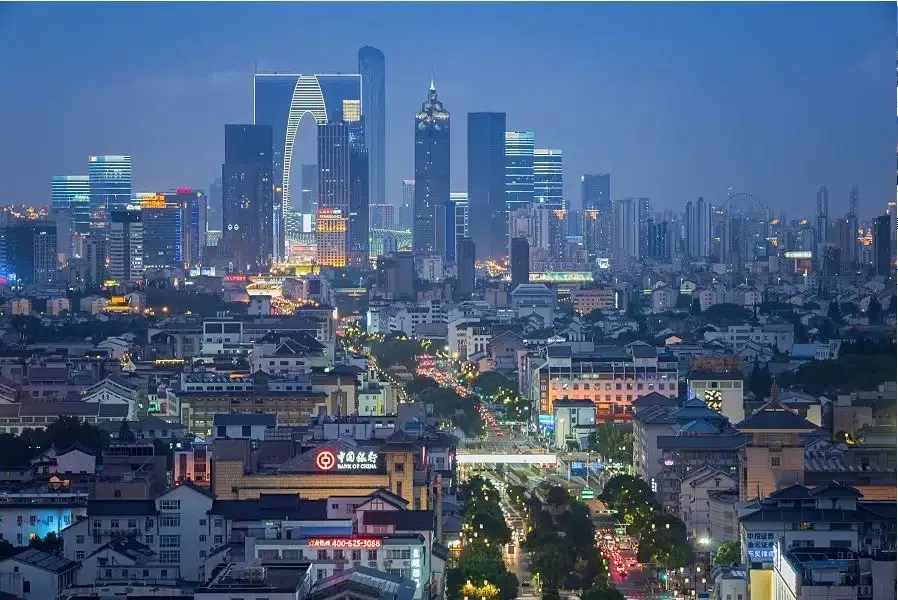
In 514 BC, a Wu monarch built a city that roughly corresponded to the present-day Suzhou in the spring and autumn of the Zhou dynasty. The Qin dynasty (221–207 BCE) established Wuxian as a county seat and the Kuaiji commandery. It would then rule most of present-day Jiangsu Province. When the Sui dynasty (581–618) conquered southern China in 589 CE, they named it after themselves and gave it the name Suzhou.
According to Sima Qian’s Records of the Grand Historian, Zhou lord Taibo built Wu in Wuxi during the 11th century BC, bringing civilization and agricultural advancements to the area. Later, the Wu dynasty relocated to Gusu, located in the modern city of Suzhou. It followed the discovery of Helü City in 514 BC by King Helü of Wu, who renamed the place after himself. The involvement of Wu Zixu, his minister, in its design resulted in the development of Suzhou.
The city came to be following the completion of the Grand Canal, positioning the city as an administrative and commercial hub. Today, it’s many things, but the most outstanding economically is its rice-growing activities. According to a 2018 census report, the city had a population of 10.72 million. There are projections that the population could grow to over 20 million people in the coming years.
Where is Suzhou Located?
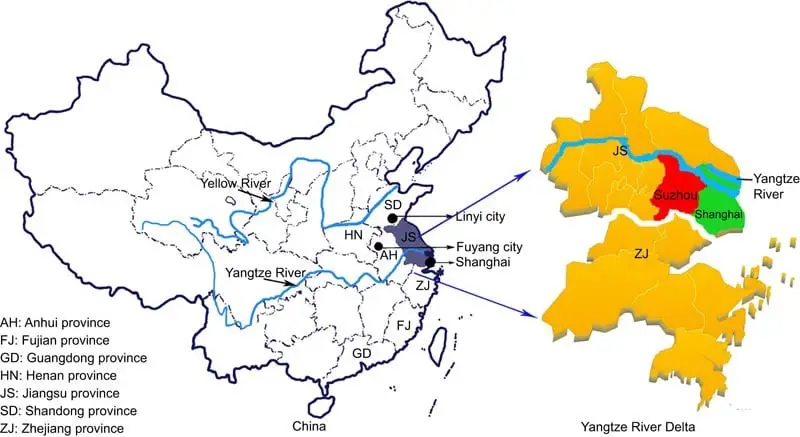
Suzhou sits along the old Grand Canal in southern Jiangsu Province, about 50 miles west of Shanghai. Ideally, Jiangsu Province is home to Suzhou City, a significant prefecture-level region with a city core just 100 kilometres west of Shanghai. The outlying suburb centres of both Shanghai and Suzhou meet here.
Specifically, Suzhou lies on the southeastern border of Jiangsu Province in eastern China. Suzhou borders the Yangtze River to the north, and it is adjacent to Shanghai to the east. Further, it is adjacent to Zhejiang Province; and to the west, it is adjacent to Lake Taihu. The Yangtze River forms the northern boundary, with Shanghai lying east. In contrast, Zhejiang Province lies south, and Lake Taihu forms the western border.
How Far is Suzhou from Shanghai
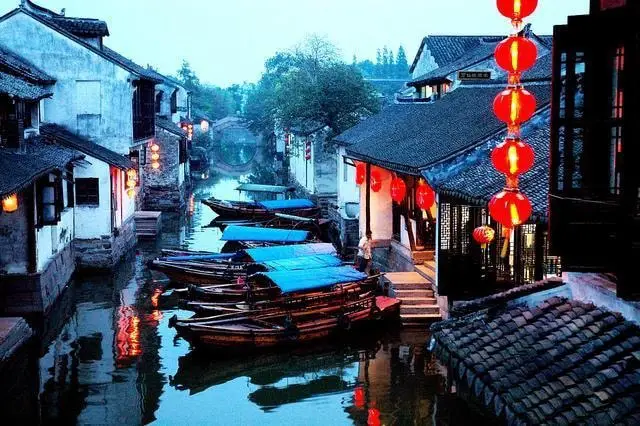
Suzhou sits 70 miles (112km) west of Shanghai. The train travel time between Shanghai and Suzhou is about 27 minutes, and the distance is approximately 52 miles (84 kilometres). China Railways Z-Class, China Railways G-Class, and China Railways D-Class provide rail services between these two cities. There are 226 trains running weekly between Suzhou and Shanghai.
The Greater Shanghai built-up area, also known as the metro, stretches from Changzhou in the west to Shanghai in the east. It incorporates the majority of the urban districts of Changzhou, Wuxi, and Suzhou, as well as Kunshan and Taicang. These cities’ populations cumulatively could rise exponentially in the next five years.
What is Suzhou Famous For
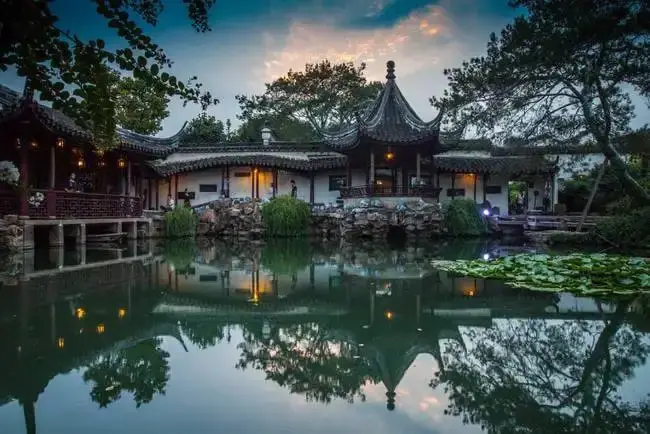
Suzhou is famous for its paradise-like scenery, which is what the city is most famous for. And one of the things that make Suzhou so popular is its magical gardening nature. The beautifully designed gardens in Suzhou are more than 150 and are the city’s most famous attraction. The size of the gardens in Suzhou is not what makes them famous. The intricate designs that include towers, corridors, ponds and terraces make you marvel.
Generally, they are above the expectations of an imperial garden. The Liu Garden is one of these gardens’ most beautiful and expansive. It stretches to nearly 10 acres and has a rich history dating back to the Taiping Rebellion in the middle of the 19th century. Liu Garden was one of the few places the war left untouched. Then there is the Xi Yuan which is equally fascinating with a fantastic layout and design.
Secondly, in Suzhou, there are numerous pagodas. Suzhou’s most famous pagodas are the twin pagodas or Shuangtasi. However, a school now occupies the temple’s former site. The twin pagodas feature the most striking features. Then, visitors go to Tiger Hill often due to its cultural appeal. In Chinese, Tiger Hill is popularly known as Hu Qiu, sitting a few miles outside town. This is where Wu King took his final rest.
In addition to a maple forest, a music fountain, and water-screen movies, Jinji Lake is a beautiful picturesque site adjacent to the Suzhou Industrial District. It mirrors environmental protection and tourism in the city. This city doubling as a commerce hub now has over 48 free scenic places along the riverbanks.
Suzhou Food
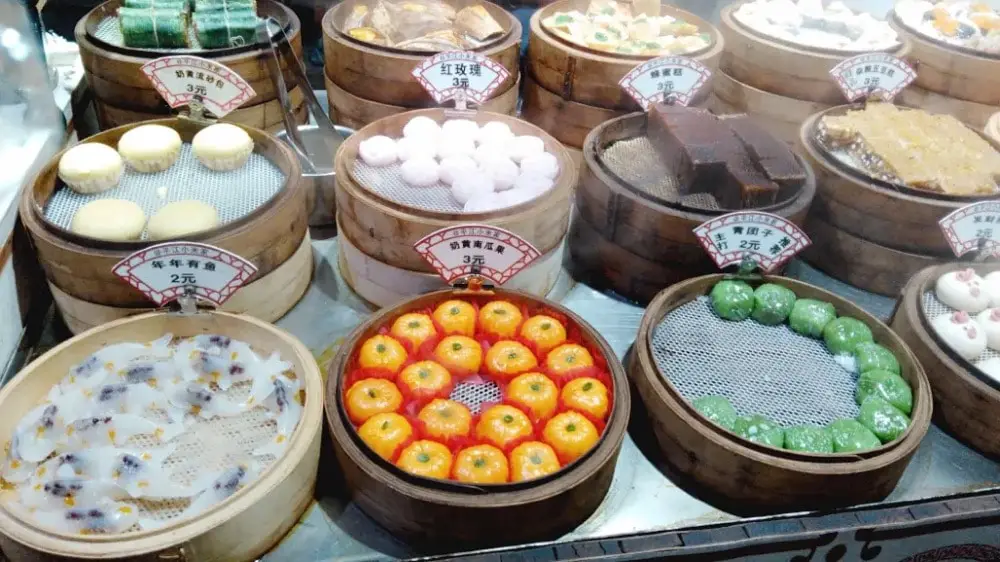
Suzhou cuisine boasts of significantly more subtle flavours than any of its peer cities, including Shanghai. Suzhou cuisine is well known for its fresh, delicately sweet flavours and beautiful presentation. It frequently includes cooked freshwater fish, particularly eel and carp. Steamed white fish, fried steamed buns, sugar porridge, and jiuniang cake are just a few of the traditional delicacies served here.
Being a fairy agricultural region, the food in Suzhou has grains like rice and wheat, which grow in plenty. Besides, protein grains such as soybeans and peanuts and beverages such as tea and mints are common on your tables. Fruits like pears, apples, and apricots form part of the region’s cuisine.
Conclusion
Suzhou is a unique city characterized by its grand canals, traditional gardens, thriving silk industry, delicious Suzhou cuisine, and many other things. It is a city that still maintains elements of old-world charm. But this also allows tourists to take a trip back in time while appreciating one of the most beautiful towns in China. These elements are what make it a UNESCO World Heritage Site.